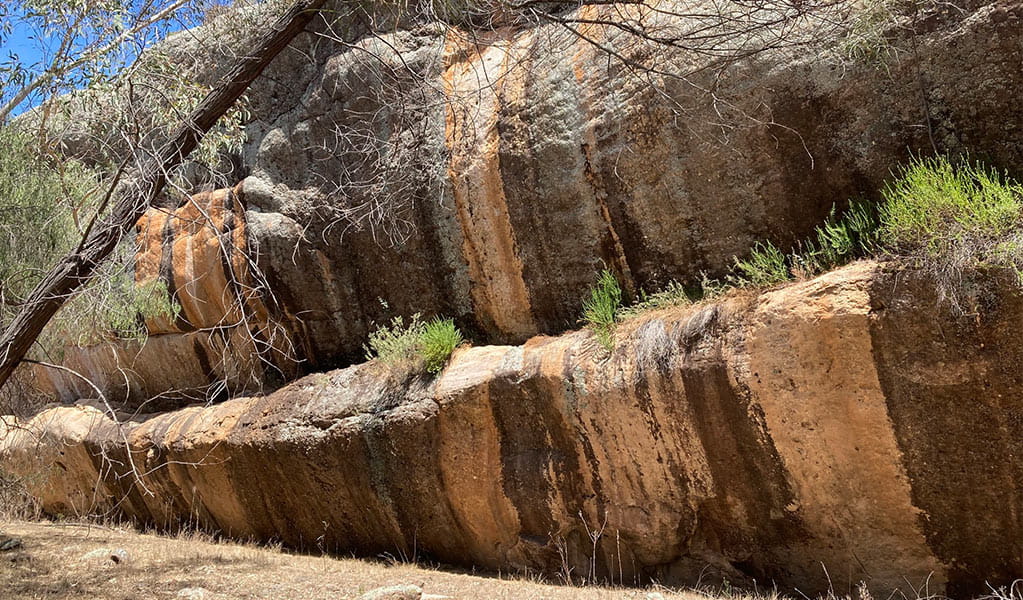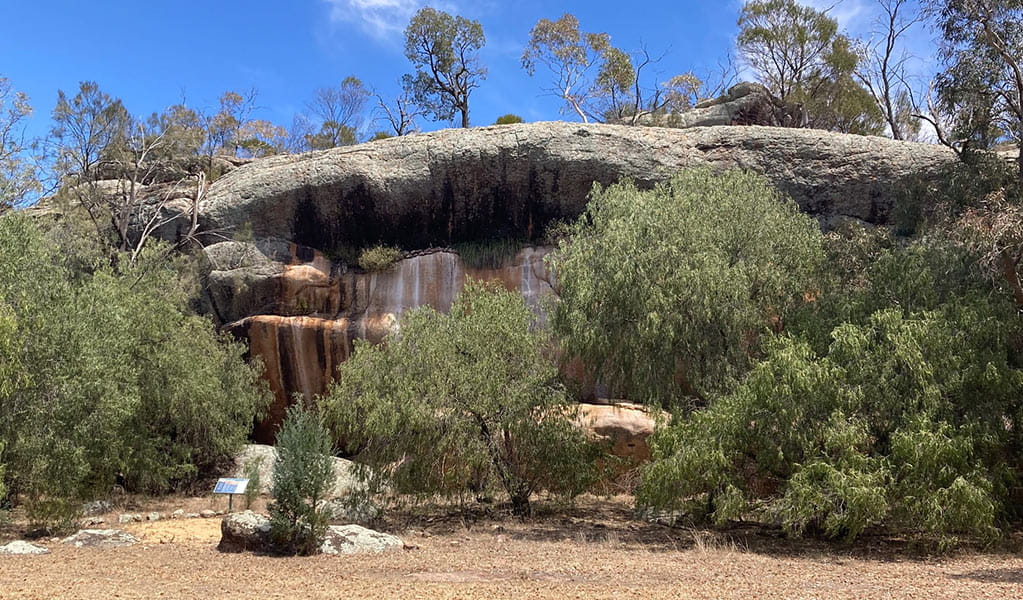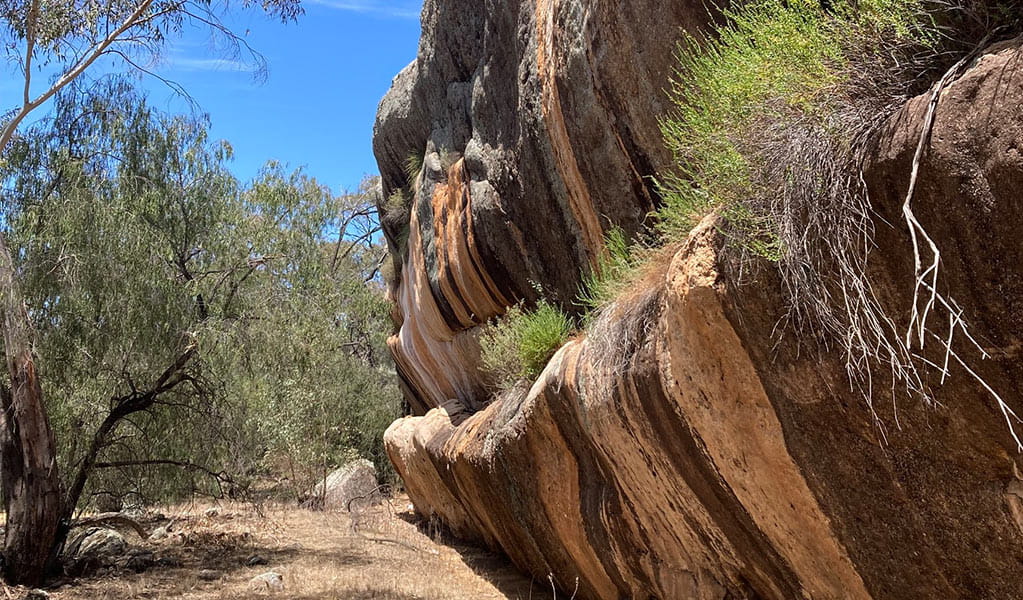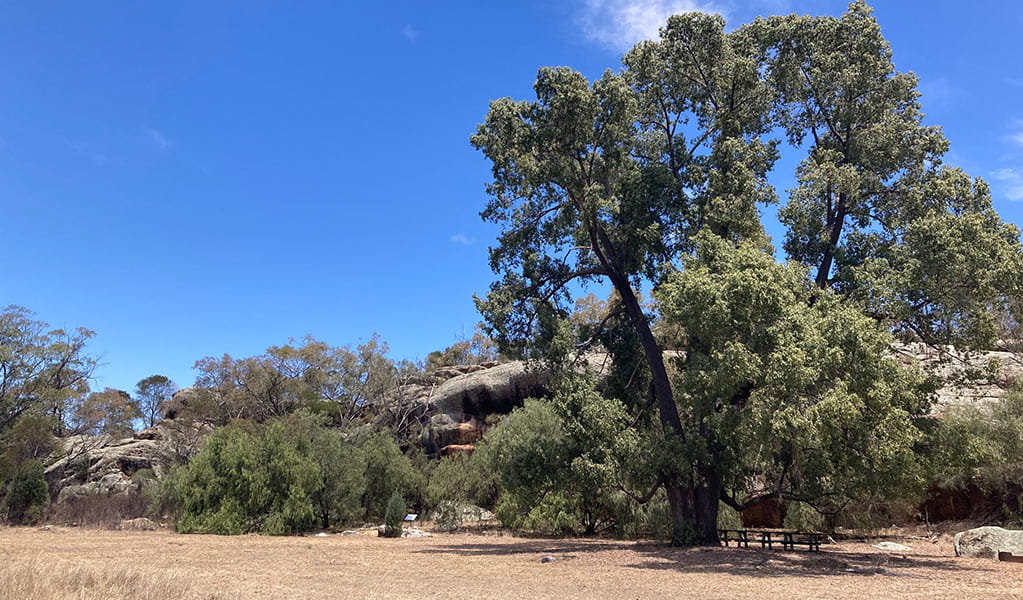Peak Hill – Bogan River Aboriginal Advisory Committee Memorandum of Understanding
Snake Rock is a visible symbol of the cultural values that are embodied in the broader cultural landscape of the area for the Wiradjuri and Peak Hill Bogan River People.
Read more about Peak Hill – Bogan River Aboriginal Advisory Committee Memorandum of Understanding
As traditional Custodians of the land, Aboriginal people have a unique role to care for and manage Country. NSW National Parks has been working with the traditional Custodians of the land to facilitate greater Aboriginal involvement in the management of Snake Rock Aboriginal Area. A principal outcome of this relationship has been the establishment of the Peak Hill – Bogan River Aboriginal Advisory Committee.
The park is jointly managed by NPWS Central West Area and the Advisory Committee through a memorandum of understanding (MoU) signed on 4 February 2005. The MoU formally acknowledges NSW National Parks' commitment to working cooperatively with the Peak Hill – Bogan River Aboriginal community.
It allows greater opportunity for Aboriginal people to sustain spiritual and cultural activities on the reserve.
Snake Rock was reserved as an Aboriginal Area on 13 January 2006 to protect the cultural values of the rock formations and Aboriginal artefacts. The park derives its name from the Aboriginal artwork depicting a snake or a river on the sandstone rock formation which dominates the park.
Snake Rock is a visible symbol of the cultural values that are embodied in the broader cultural landscape of the area for the Wiradjuri and Peak Hill Bogan River People. The rock formation is a distinctive feature of the region's topography and forms part of a pathway that links to other sites in the surrounding area. In the past it was used as a campsite due to the presence of permanent water, and it is still used as an important teaching place for the sharing of knowledge by Aboriginal communities. The most visible cultural element of the park is the rock art site. Other Aboriginal cultural sites located within the area are an open campsite, axe grinding grooves, scatters of stone artefacts, water holes and scar trees.




